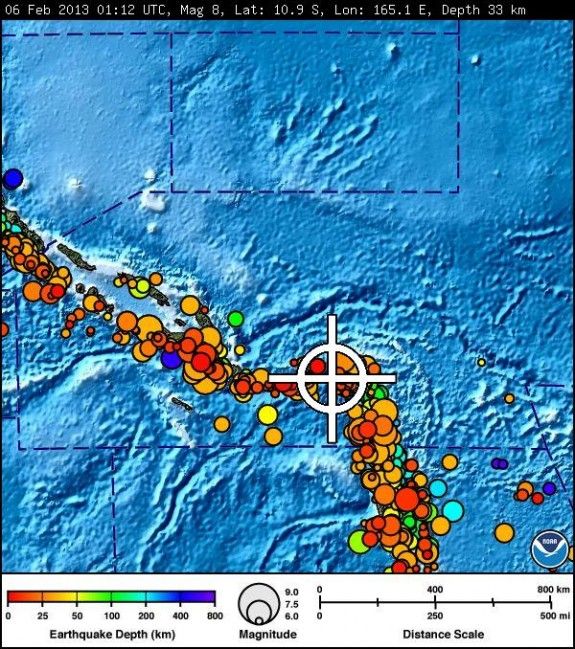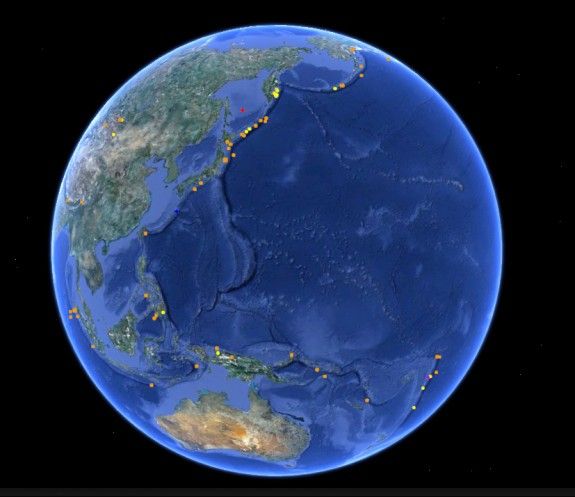A Massive 8.0 Earthquake Hit the South Pacific Last Night
Huge magnitude 8.0 earthquakes are rare—but not as rare as you’d think
/https://tf-cmsv2-smithsonianmag-media.s3.amazonaws.com/filer/2013020609003102_06_2013_solomon-island-earthquake.jpg)
Yesterday, a massive magnitude 8.0 earthquake shook the ocean floor off the coast of Lata, one of Solomon Islands that form an archipelago to the northeast of Australia. The earthquake spawned a tsunami that triggered warnings and watches for a vast swath of the southwest Pacific, putting residents in those regions on alert. Those warnings were eventually cancelled as the wave’s path became more clear, but the wave still managed to do a significant amount of damage. So far at least, authorities have reported that at least five people were killed: “one child, an elderly male and three elderly females,” says the Wall Street Journal. The main magnitude 8.0 earthquake was chased by dozens of aftershocks, many of which were of magnitude 5.0 or greater.
Loti Yates, director of the national disaster management office, confirmed that the airport in Lata had been damaged by the tsunami and that logs and debris that had washed into the area by the wave were blocking the runway. Mr. Yates said four villages had been destroyed, but he could not confirm any fatalities. Mr. Yates said a team of officials will be sent to the region early Thursday.
Though the damage is still being assessed, and the toll is likely to climb with time, the residents of the region actually fared much better than in a similar earthquake that took place just six years ago when a magnitude 8.1 earthquake hit the Solomon Islands in April 2007, killing 52 and causing millions of dollars in damage.

Such huge events are extremely rare, representing just 0.00007% of all earthquakes worldwide, on average. But, given the absolutely massive number of earthquakes that go off around the world, it still works out to one huge magnitude 8.0 or greater event every year or so. The bulk of these big earthquakes occur along the western coast of South America or along the western boundary of the Pacific Ocean—a region known as the Pacific Ring of Fire.

Before yesterday’s quake off the Solomon Islands, the most recent massive earthquake was a magnitude 8.2 event off the northwest coast of Sumatra, an earthquake triggered by the ongoing breakup of the Indo-Audstralian tectonic plate.
More from Smithsonian.com:
Largest Quake of the Year Crossed Fault Lines, Echoed for a Week
This Is Probably the World’s Most Beautiful Seismograph
Your Cell Phone Could Soon Become Part of a Massive Earthquake Detection System
/https://tf-cmsv2-smithsonianmag-media.s3.amazonaws.com/accounts/headshot/smartnews-colin-schultz-240.jpg)
/https://tf-cmsv2-smithsonianmag-media.s3.amazonaws.com/accounts/headshot/smartnews-colin-schultz-240.jpg)